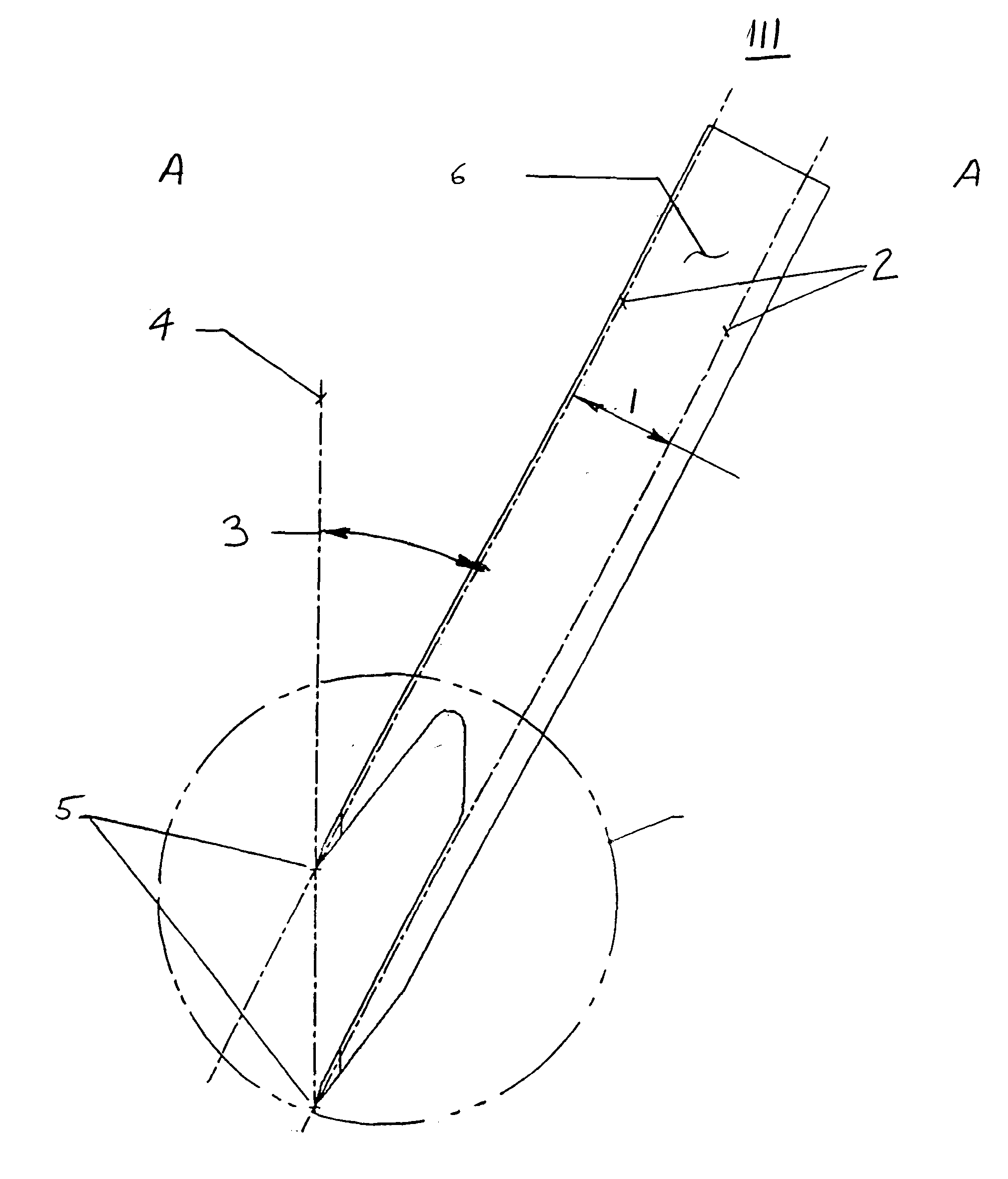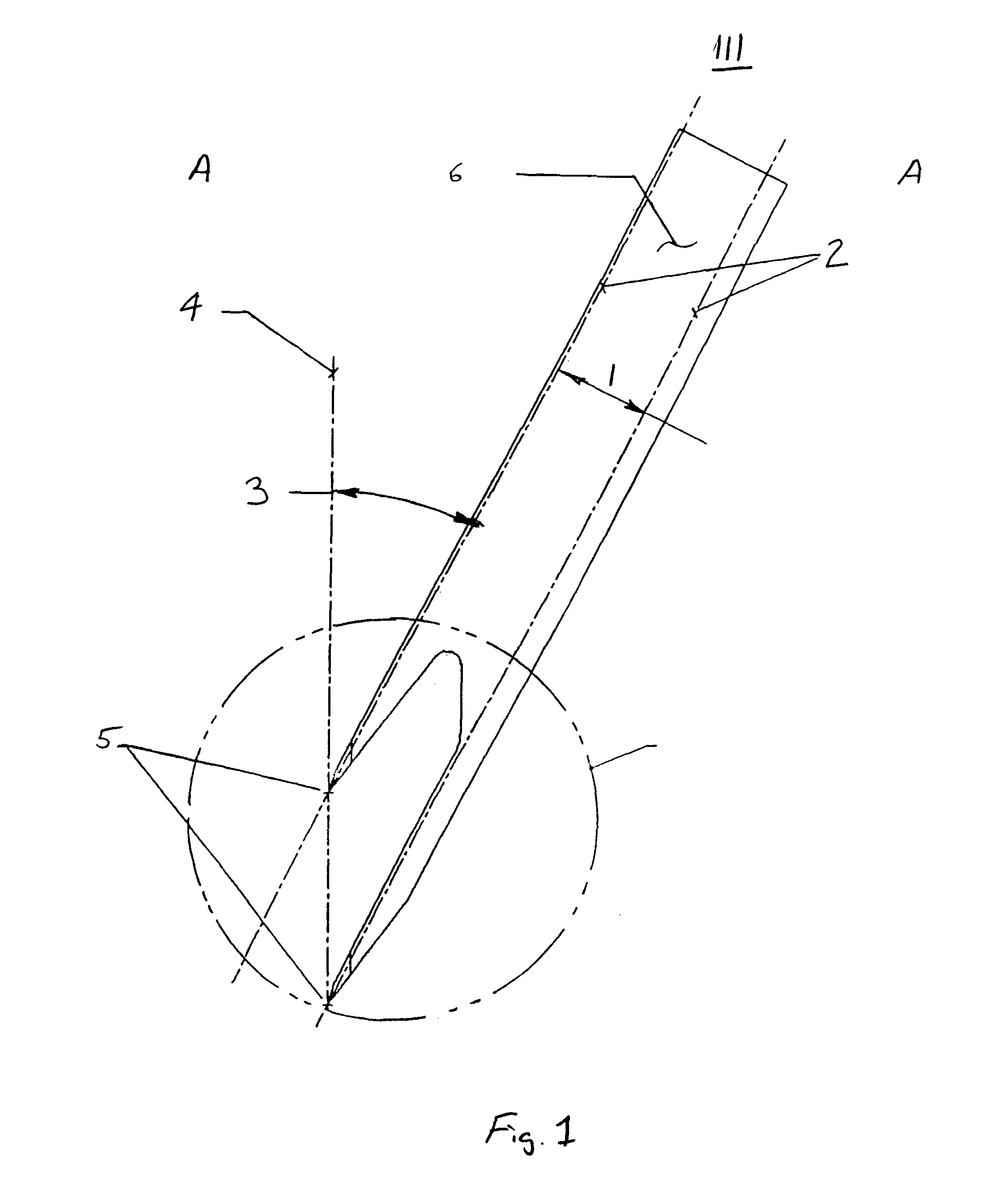Non-separating diffuser for holes produced by a two step process
a two-step process and diffuser technology, applied in the direction of manufacturing tools, machines/engines, cleaning using liquids, etc., can solve the problems of high cost and difficulty of fabrication, super-cooled airfoils are very difficult to manufacture, and the effect of cos
- Summary
- Abstract
- Description
- Claims
- Application Information
AI Technical Summary
Benefits of technology
Problems solved by technology
Method used
Image
Examples
Embodiment Construction
)
[0019]The present invention teaches the creation of a preferably EDM'd diffuser whose centerline is nominally co-linear with the hole drilled through the wall which forms the meter section of the finished “Vehr” hole. The hole may be round or rectangular with filleted corners.
[0020]The present invention is herein described in terms of the EDM tool used to form the diffuser. While described as though the hole is drilled first, the process may in practice be reversed. The present invention is described herein with respect to a “comb electrode” having at least two teeth. However, it would be obvious to one skilled in the art to extend the teachings of the present invention to include the use of a single tooth electrode used to EDM one diffuser at a time, or, if “n” parallel holes exist in a plane, a comb of “n” teeth could be used to form the diffuser on “n” holes at a time. Therefore, as used herein, “comb electrode” refers as well to an electrode having only one tooth. In the case o...
PUM
| Property | Measurement | Unit |
|---|---|---|
| angle | aaaaa | aaaaa |
| angle | aaaaa | aaaaa |
| diffuser angles | aaaaa | aaaaa |
Abstract
Description
Claims
Application Information
 Login to View More
Login to View More - R&D
- Intellectual Property
- Life Sciences
- Materials
- Tech Scout
- Unparalleled Data Quality
- Higher Quality Content
- 60% Fewer Hallucinations
Browse by: Latest US Patents, China's latest patents, Technical Efficacy Thesaurus, Application Domain, Technology Topic, Popular Technical Reports.
© 2025 PatSnap. All rights reserved.Legal|Privacy policy|Modern Slavery Act Transparency Statement|Sitemap|About US| Contact US: help@patsnap.com



